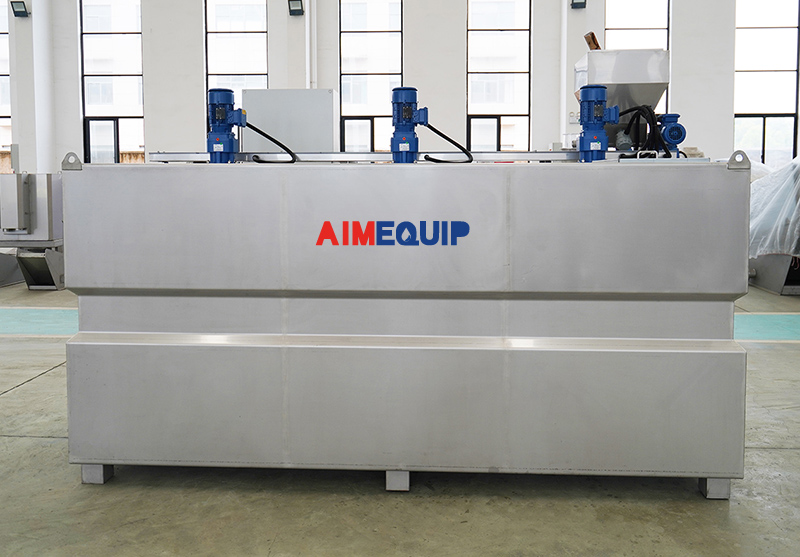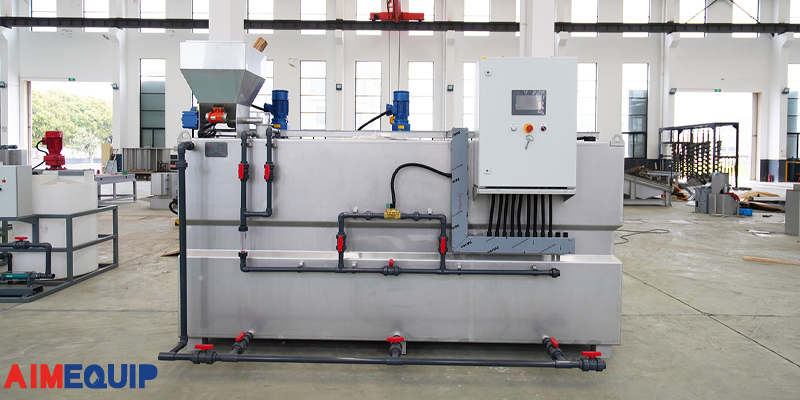In various industrial and municipal applications, the precise and efficient dosing of chemicals is paramount. Whether it’s water treatment, food processing, pharmaceutical manufacturing, or any other sector reliant on chemical processes, the accuracy of dosing directly impacts product quality, operational costs, and environmental sustainability. Over the years, the evolution of chemical dosing systems has been marked by technological advancements aimed at optimizing dosing accuracy, reliability, and safety.
Wastewater treatment plays a pivotal role in safeguarding public health and protecting the environment. Chemical dosing systems in wastewater treatment are indispensable in this process, enabling the removal of contaminants and the disinfection of wastewater to meet regulatory standards. In wastewater treatment plants, the efficient and precise dosing of chemicals is essential for maximizing treatment efficiency while minimizing operational costs and environmental impact.
The Imperative of Wastewater Treatment
The rise of urbanization and industrialization has intensified the generation of wastewater, laden with pollutants ranging from organic compounds to heavy metals and pathogens. Without adequate treatment, wastewater poses grave risks to ecosystems, public health, and water resources. Wastewater treatment plants serve as guardians, employing a combination of physical, chemical, and biological processes to cleanse wastewater before its release back into the environment.
Pillars of Chemical Dosing Systems
At the heart of wastewater treatment lie chemical dosing systems, responsible for administering precise doses of chemicals to optimize various treatment processes. These systems serve multifaceted roles:
-
Coagulation and Flocculation
The initial step in many wastewater treatment processes involves the removal of suspended solids and colloidal particles through coagulation and flocculation. Chemical dosing systems inject coagulants, such as ferric chloride or aluminum sulfate, which destabilize the particles, causing them to clump together. Subsequently, flocculants, often in the form of polymers, are added to promote the formation of larger flocs, facilitating their removal by settling or filtration. This dual process, orchestrated by chemical dosing systems, is fundamental to achieving efficient solids removal in wastewater treatment plants.
-
pH Adjustment
Maintaining optimal pH levels is critical for the effectiveness of various treatment processes in wastewater treatment. Chemical dosing systems play a vital role in pH adjustment by introducing alkaline or acidic substances to neutralize or adjust the pH of the wastewater. For instance, the addition of lime (calcium hydroxide) raises pH levels, while sulfuric acid lowers them. Precise control of pH levels ensures optimal conditions for subsequent treatment steps, such as biological degradation or chemical precipitation, enhancing overall treatment efficiency.
-
Disinfection
One of the final stages in wastewater treatment involves disinfection, where pathogens such as bacteria, viruses, and protozoa are targeted to ensure the safety of the treated effluent. Chemical dosing systems facilitate this crucial step by introducing disinfectants, such as chlorine, chlorine dioxide, ozone, or ultraviolet (UV) light, to deactivate or destroy pathogenic microorganisms. Through meticulous dosing control, chemical dosing systems ensure that disinfection is achieved effectively while minimizing residual disinfectants to meet regulatory standards and prevent environmental harm.
-
Nutrient Removal
In addition to physical and biological treatment processes, some wastewater treatment plants employ chemical dosing systems for nutrient removal, particularly nitrogen and phosphorus. Chemicals such as ferric chloride or aluminum-based coagulants can be utilized to precipitate phosphorus, while nitrogen removal may involve chemical dosing for biological denitrification or chemical precipitation. By supplementing biological processes with targeted chemical dosing, wastewater treatment plants can achieve enhanced nutrient removal efficiency, mitigating eutrophication and protecting receiving water bodies.
-
Advanced Treatment Processes
Chemical dosing systems also play a crucial role in advanced treatment processes aimed at addressing emerging contaminants and achieving stringent effluent quality standards. From the removal of trace organic pollutants through chemical oxidation processes to the control of emerging contaminants like pharmaceuticals and personal care products, chemical dosing systems enable wastewater treatment plants to adapt and respond to evolving challenges in water quality management.

Challenges and Complexities
The effective deployment of chemical dosing systems encounters several challenges:
-
Wastewater Variability
Wastewater composition fluctuates based on factors like industrial discharges, seasonal changes, and influent sources, demanding adaptive dosing strategies.
-
Chemical Interactions
The intricate interplay between chemicals and diverse wastewater constituents necessitates careful selection and dosage adjustments to achieve desired treatment outcomes.
-
Regulatory Compliance
Stringent regulations mandate compliance with effluent quality standards, requiring meticulous dosing control and continuous monitoring to meet regulatory benchmarks.
Innovative Solutions and Technological Advancements
Addressing these challenges, recent innovations have propelled chemical dosing systems to new heights of efficiency and reliability:
-
Automation and Control
Automated dosing systems equipped with sensors, actuators, and feedback loops enable real-time adjustments, optimizing dosing parameters and enhancing treatment performance.
-
Online Monitoring
Online analytical instruments, such as turbidity meters and pH sensors, provide instantaneous feedback on process parameters, facilitating proactive intervention and fine-tuning of dosing operations.
-
Dual-Stage Dosing
Dual-stage dosing systems introduce chemicals at multiple points along the treatment train, ensuring sequential optimization of treatment processes and minimizing chemical usage.
-
Sustainable Practices
Embracing green chemistry principles, such as the use of eco-friendly chemicals and alternative disinfection methods, fosters sustainability and reduces the environmental footprint of wastewater treatment.
Incorporating state-of-the-art technology and a commitment to excellence, our company offers a comprehensive range of chemical dosing systems tailored to the unique needs of wastewater treatment facilities worldwide.


I am glad to be one of the visitants on this great site (:, regards for posting.
as soon as I detected this web site I went on reddit to share some of the love with them.